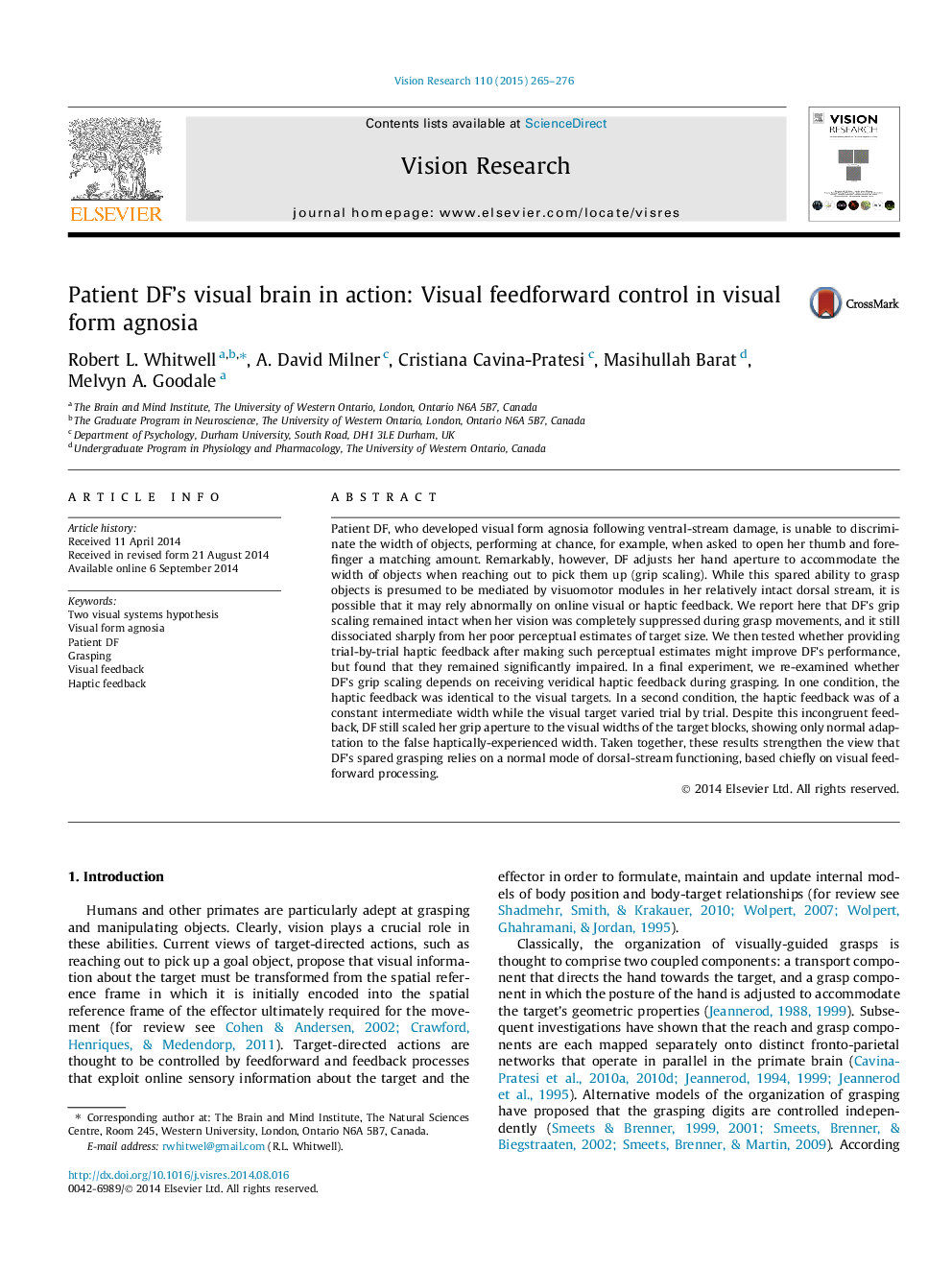| کد مقاله | کد نشریه | سال انتشار | مقاله انگلیسی | نسخه تمام متن |
|---|---|---|---|---|
| 6203195 | 1603185 | 2015 | 12 صفحه PDF | دانلود رایگان |

- Patient DF grasped Efron blocks across their width or manually estimated this target feature.
- Patient DF's perception-action dissociation does not rely on online visual feedback.
- Haptic feedback does not improve patient DF's chance manual estimation performance.
- Patient DF's grip aperture adapts to the constant, intermediate-haptic-width of the target.
- Patient DF's perception-action dissociation does not rely on congruent vision and haptics.
Patient DF, who developed visual form agnosia following ventral-stream damage, is unable to discriminate the width of objects, performing at chance, for example, when asked to open her thumb and forefinger a matching amount. Remarkably, however, DF adjusts her hand aperture to accommodate the width of objects when reaching out to pick them up (grip scaling). While this spared ability to grasp objects is presumed to be mediated by visuomotor modules in her relatively intact dorsal stream, it is possible that it may rely abnormally on online visual or haptic feedback. We report here that DF's grip scaling remained intact when her vision was completely suppressed during grasp movements, and it still dissociated sharply from her poor perceptual estimates of target size. We then tested whether providing trial-by-trial haptic feedback after making such perceptual estimates might improve DF's performance, but found that they remained significantly impaired. In a final experiment, we re-examined whether DF's grip scaling depends on receiving veridical haptic feedback during grasping. In one condition, the haptic feedback was identical to the visual targets. In a second condition, the haptic feedback was of a constant intermediate width while the visual target varied trial by trial. Despite this incongruent feedback, DF still scaled her grip aperture to the visual widths of the target blocks, showing only normal adaptation to the false haptically-experienced width. Taken together, these results strengthen the view that DF's spared grasping relies on a normal mode of dorsal-stream functioning, based chiefly on visual feedforward processing.
Journal: Vision Research - Volume 110, Part B, May 2015, Pages 265-276